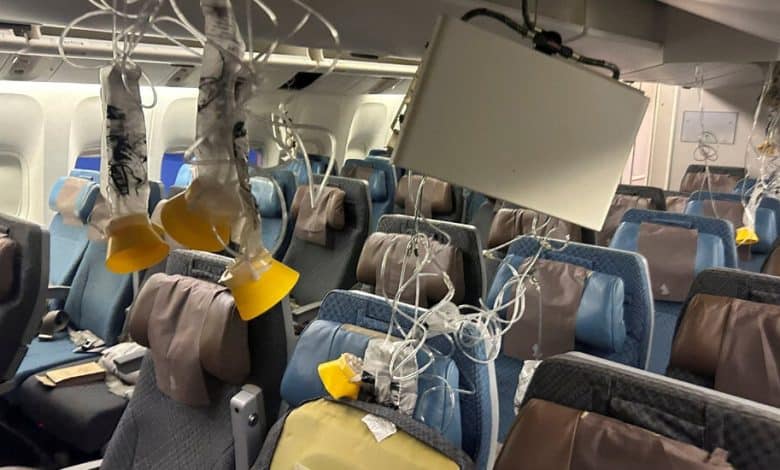‘Dropping Very Dramatically’: What Deadly Turbulence Did to a Flight

The seatbelt sign came on moments after the plane started shaking, but, for some, it was too late.
“Whoever wasn’t buckled down, they were just launched into the air within the cabin,” said Dzafran Azmir, who was among the 211 passengers on board the London-to-Singapore flight that encountered deadly turbulence on Tuesday. “Within an instant, they hit the ceiling of the cabin and dropped right back onto the floor.”
The plane, a Singapore Airlines Boeing 777-300 ER, had taken off from London’s Heathrow Airport on Monday night, about 10 hours earlier. It was about three-quarters full. Many of the travelers were Singaporeans returning home. Some were students studying in England. Others were families and some who had planned a “holiday of a lifetime” to far-flung destinations like Australia.
The bulk of the 13-hour journey of flight SQ321 was over, and many passengers had finished their last meal onboard, a breakfast that these days has been a choice between an omelet with cream cheese or stir-fried Asian noodles, both served with a side of fresh fruit.
By this time, the plane had reached the Bay of Bengal, which sits between the Indian subcontinent and the Malay Peninsula in Southeast Asia. Some pilots consider the region “notorious” this time of the year because its monsoon rains can cause turbulence.
But commercial pilots know how to prepare for such scenarios. They rely on weather radar and carry extra fuel so they can fly around and wait for the weather to ease, if needed. Or they follow the course charted by other planes that recently have passed through the area and have warned air traffic controllers about weather upheavals.
But one scenario that is impossible to prepare for is when the skies are clear and the plane’s radar does not detect anything amiss. This phenomenon is known as clear air turbulence.